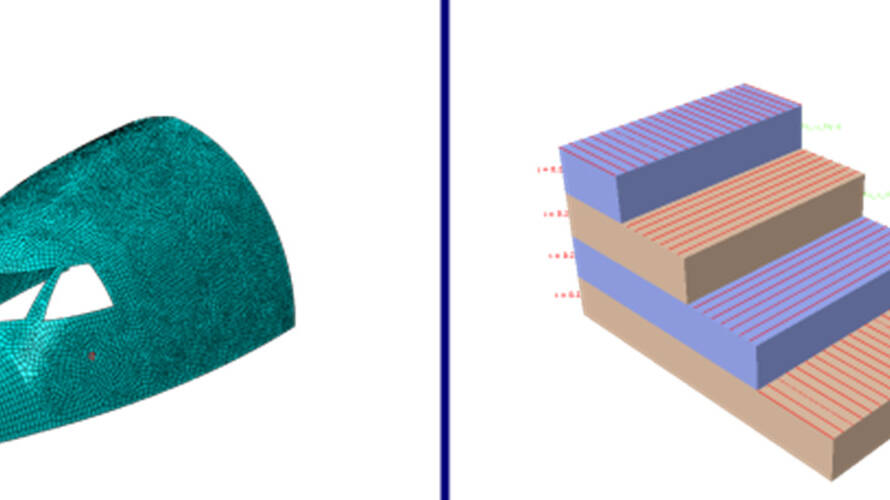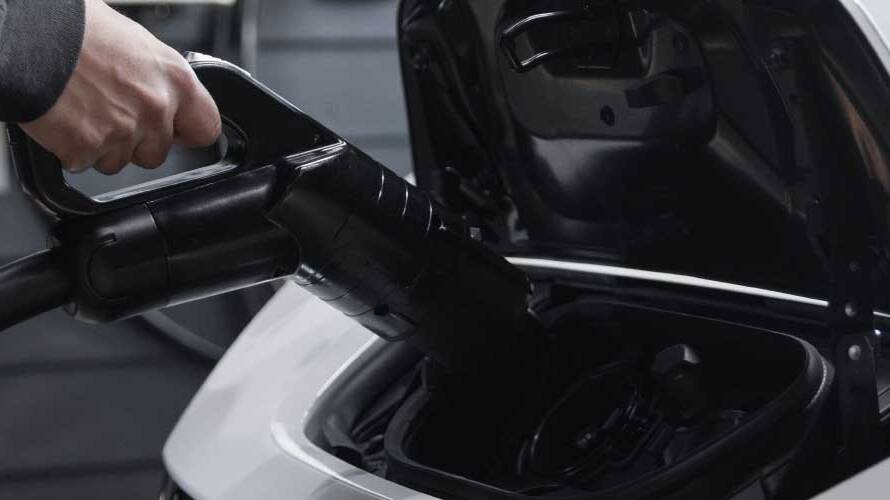You may have seen the Tesla video demonstrating how their engineering team collects data from real-life use of the vehicle. More precisely, Tesla collects and analyses accurate impact-related information using embedded sensors. They use this data to optimize the safety and driver experience of their electric vehicles.

Infusing real-world data into an FEA model has plenty of benefits. For Tesla, such modeling may increase vehicle safety, reduce development costs, provide insight into product performances, and much more.
Of course, there are many use cases where we can derive benefits from such analysis. Let’s see how we all can benefit from real-life data while doing FEA.
Using operational data to predict durability and maintenance – closing the digital loop
Let’s start by understanding what we mean by an “open loop.” In an open-loop scenario, we are referring to a digital model, which is posing hypotheses based on loads and charges according to some industry standards. These hypotheses are then applied in the FEA models and simulations.
The results aren’t necessarily based on real-life data but on best practices that in many cases are inadequate, obsolete, or simply misaligned with reality. Examples of such open-loop models may include safety standards in the automotive industry or construction techniques in buildings and infrastructure.
When we talk about “closing the loop,” we are referring to a digital twin, a Finite Element Model (FEM) based on a real-life situation. In other words, we are not taking the data from generic industry standards, but on measurements of the physical asset itself, such as Tesla does in their video. The data is then injected into our FEM representation of the same asset.
With this new information, we can run simulations and correlate the results of our hypotheses against real-life data to confirm the correctness of our digital model.
Closing the loop helps validate the FEM, but it can also help refine the standards over the years. Moreover, it may also enable predictive maintenance, increase quality and safety, improve environmental performance, reduce development costs, optimize the product, and more.
Real-World Examples
Let’s look at a few more real-world examples from Optimec’s simulation practice.
Closing the loop to enable predictive pipeline maintenance
Pipeline maintenance is crucial in the oil and gas industry because the pressure of the gas on the pipe can create structural weakness, which prevents it from working at its best and can lead to serious safety risks and major costs in case of structural failure.
Optimec was engaged in a study to understand the corrosion on pipes to prioritize the maintenance of a pipeline.
To close the loop and properly understand what was happening to the pipe, we took the following steps:
- Pipe scanning: To collect the real-life data of the pipes and see how the pipe was affected by corrosion.
- Data transformation: To be able to integrate the data from the scan to the FE model.
- Simulate and predict: To understand the behavior of the pipe according to real-life data.
- Modification and conception: Our new understanding allows us to suggest maintenance and modification to the pipe
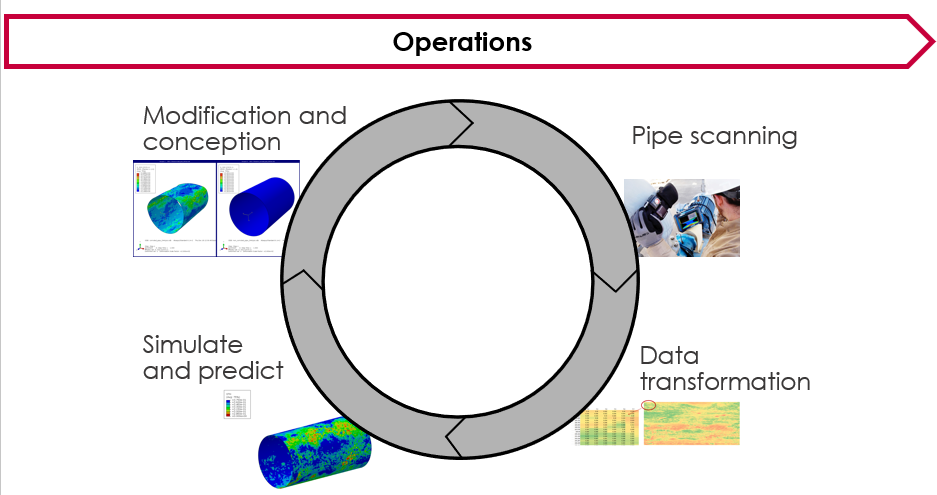
By adding real-life data to our FEM, we were able to easily see the impact of the corrosion on the pipe through a stress analysis with a deformation scale factor of 200.
The picture is a representation of the stress analysis applied to the corroded pipe and a non-corroded pipe. It allows the engineer to rapidly see the deformation through the extrapolation.

The analysis allowed us to predict which parts of the pipeline required immediate maintenance.
Overall, we used a scan picture of the real-life data to close our loop by reimplementing it into a FEM model. Within a matter of days, our customer was able to prioritize their maintenance, secure the operation and anticipate the pipeline maintenance lifecycle.
Interested in learning more: read the detailed blog article.
Closing the loop to understand minecart failures and cracks
In the next use case, the Optimec team had to understand cracks and failures in minecarts.
To do so, we had to go 750 m underground to see the impact on the minecarts… must admit that taking a pickup truck down into this underground city was quite impressive.
In this scenario, we had to collect the data while the minecarts were in operation i.e., in movement. As such, a different technique was used to collect the data. Our team used True-Load software from Wolf star technologies to capture the real-life load data.
TrueLoad software uses strain gauges to collect the data on the movement for a specific time.
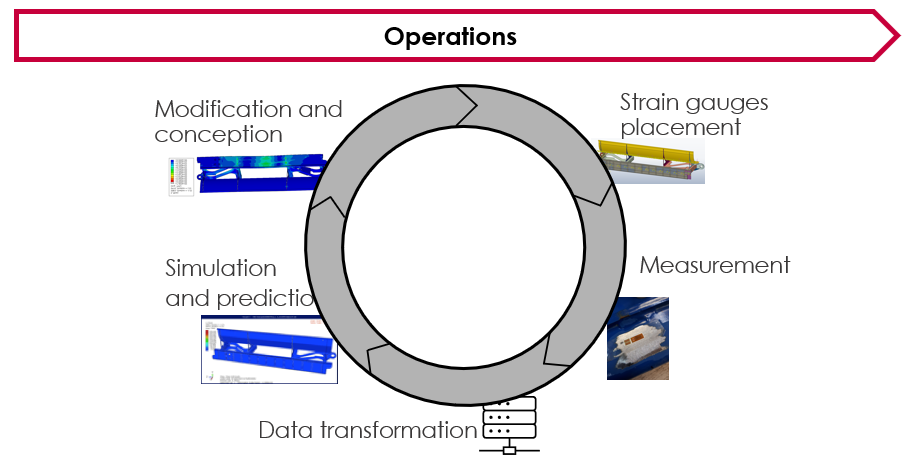
Here are the steps we followed to conduct the study:
First, our team created a Finite Element Model that represented the side panel and the station tire.
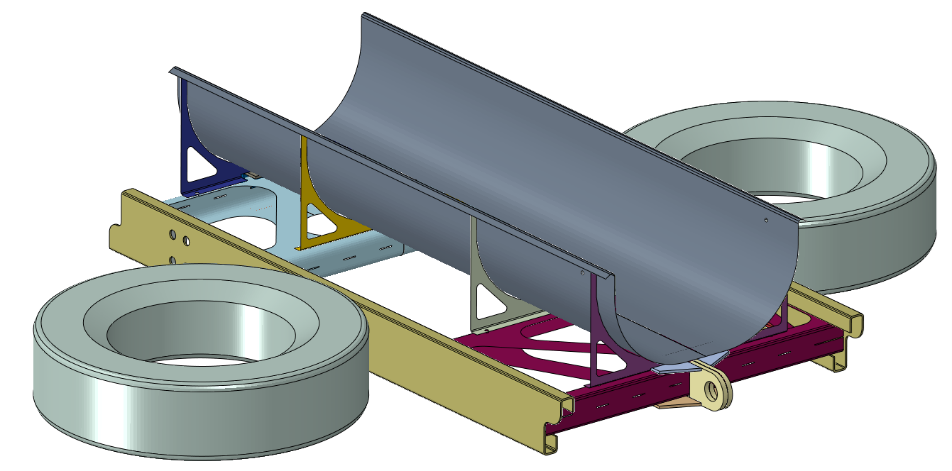
Next, we used True Load to calculate the strain gauge positions on the minecarts and the side panels to get the real-life loads on the minecarts in operation.
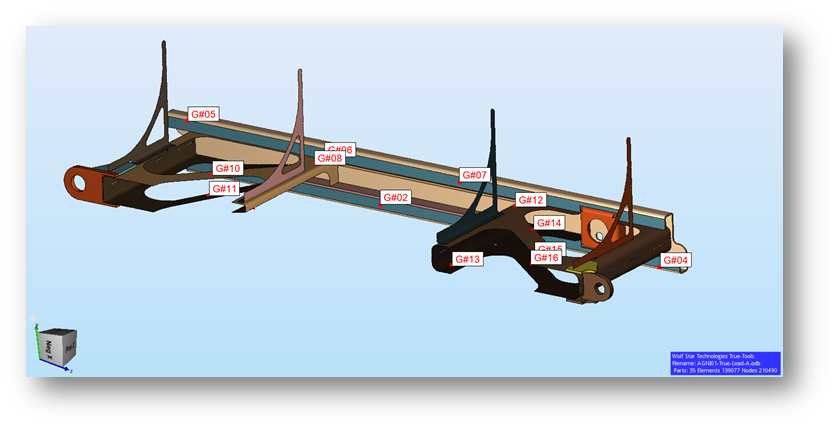
Once we determined the exact positions for the strain gauges, we made our way down into the underground city of the mine to install them.
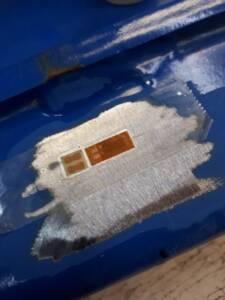 As you can see in the picture, the strain gauges look like little electronic Band-Aids. With their sensors, they can collect load data that we will use in our FEM.
As you can see in the picture, the strain gauges look like little electronic Band-Aids. With their sensors, they can collect load data that we will use in our FEM.
After installing all of the gauges, the next step for our engineers was to return to the office with all the new data and feed it into our model.
By adding the real-life data to our FEM, we were able to simulate the real-life loads of the train in movement and understand the pressure applied on the side panel.
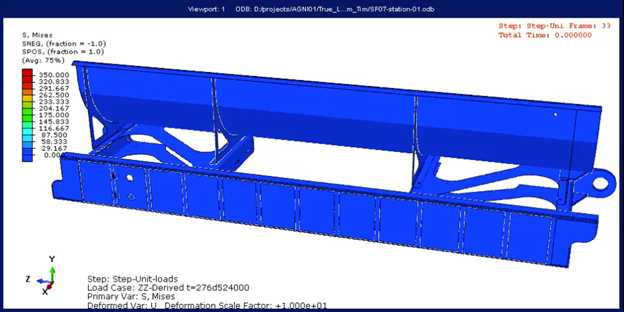
Thus, our team was able to compare and validate the physical side panels with the virtual one and confirm the same crack failure on both.
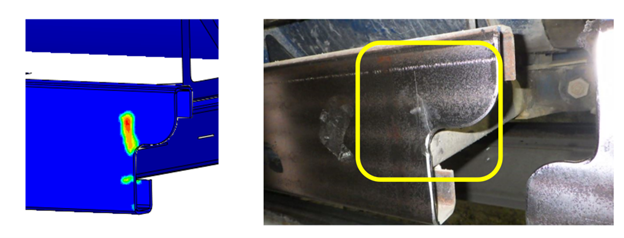
Afterwards, our engineers were able to validate that the FEM model was correct since the results were correlating adequately. The picture above is a great representation of the accurateness of our model.
As a result, our team was able to simulate the failures and optimize the side panels to prevent them from cracking.
With the addition of real-life loads, our team closed the loop by understanding the crack failures and providing new design iterations to prevent them.
By optimizing the cart system, the mine also benefits from lower downtime, easier maintenance, and higher operational safety.
What are the real benefits of closing the loop?
Now that we’ve shown you that we can close the loop in many ways, let’s talk about the benefits.
Using real-life data to complement hypotheses based on standards helps validate the accuracy of the finite element model and can help improve the standards in the future.
Closing the loop between actual and theoretical data increases our efficiency as we
• Predict required maintenance cycles
• Increase security and quality
• Create a positive impact on the environment
• Reduce production cost
• Reduce time-to-market
• Anticipate products’ lifecycle
• Optimize products
Want to learn more about what we do at Optimec Consultants? Get in touch today.
